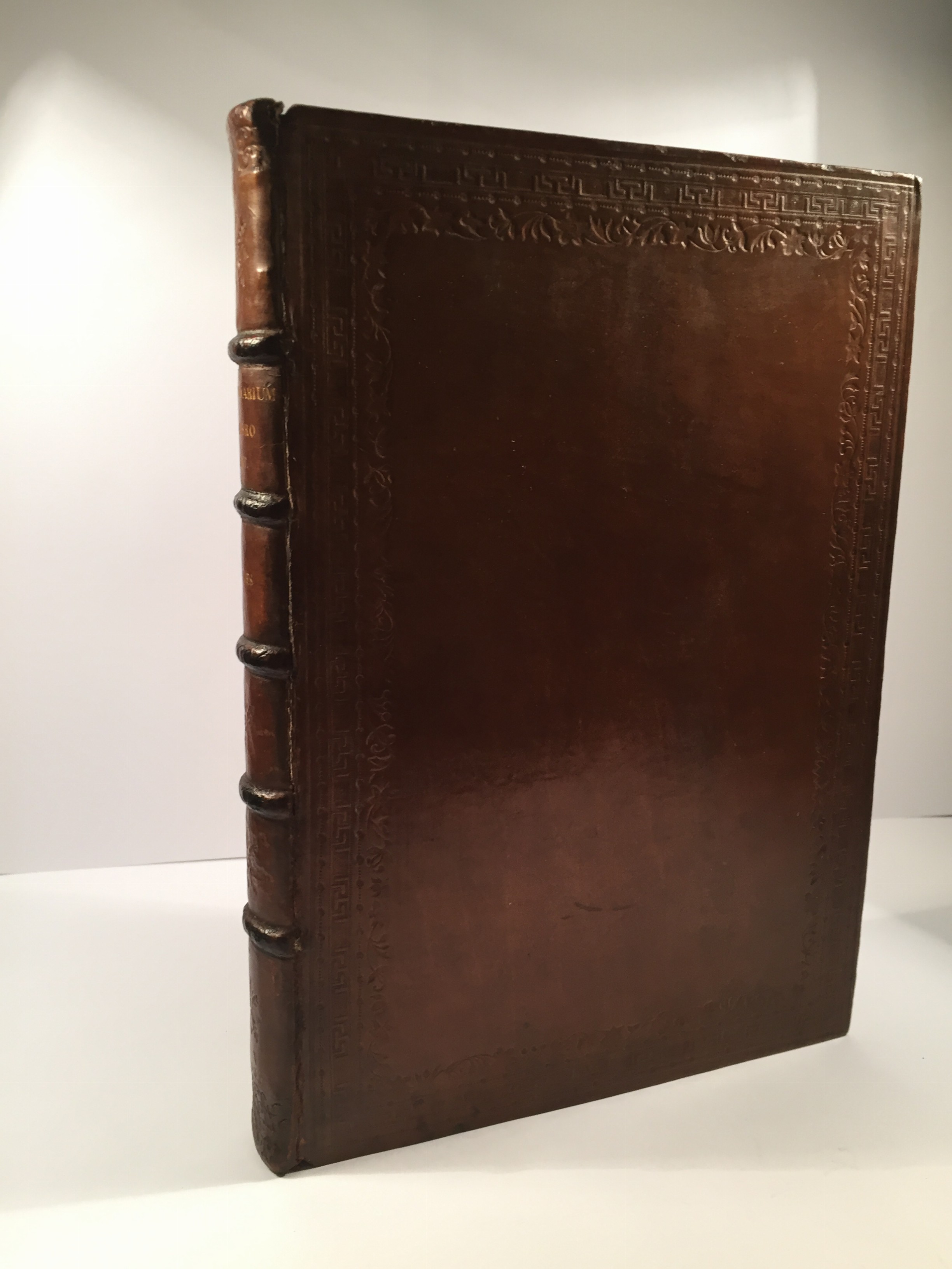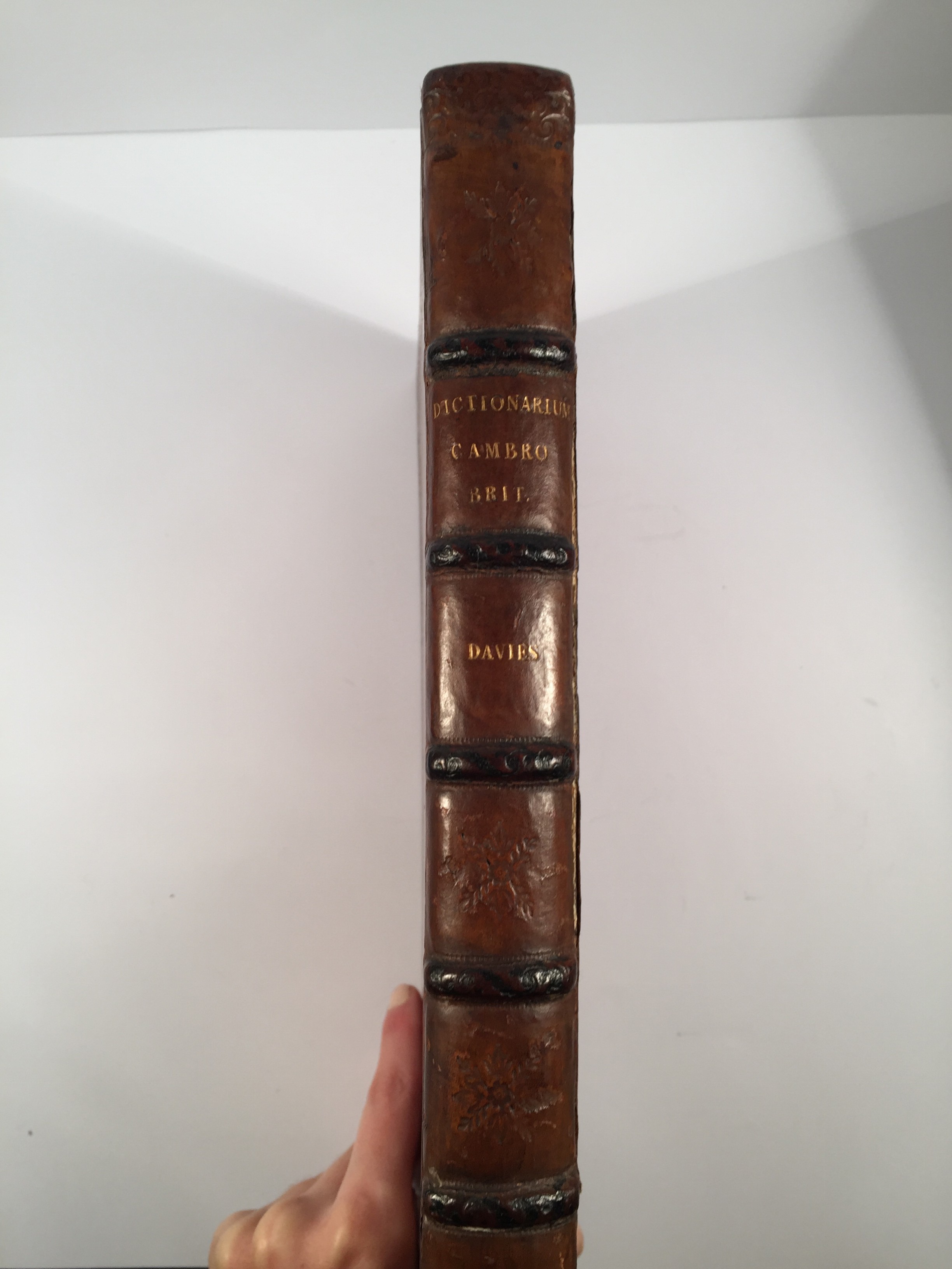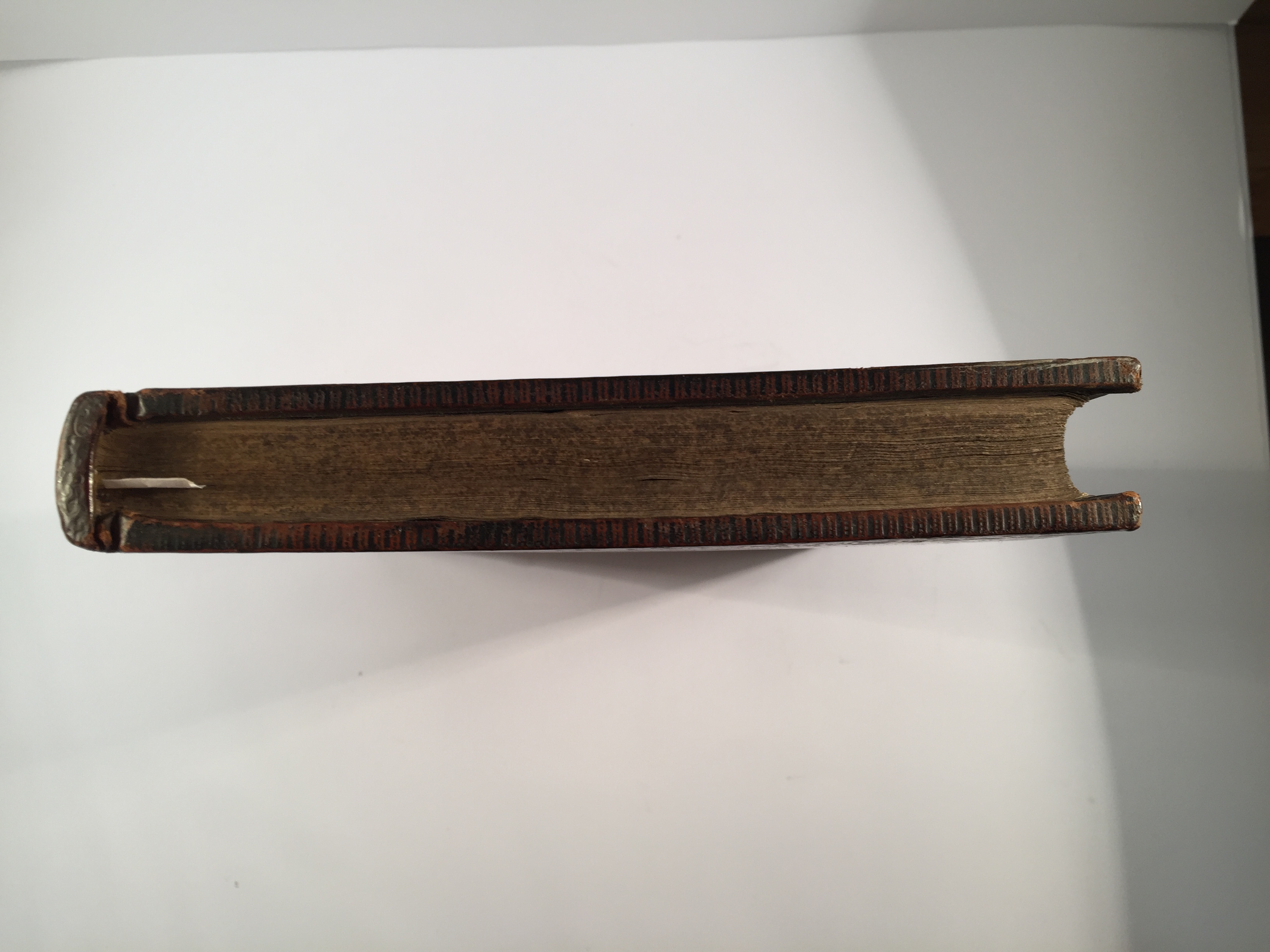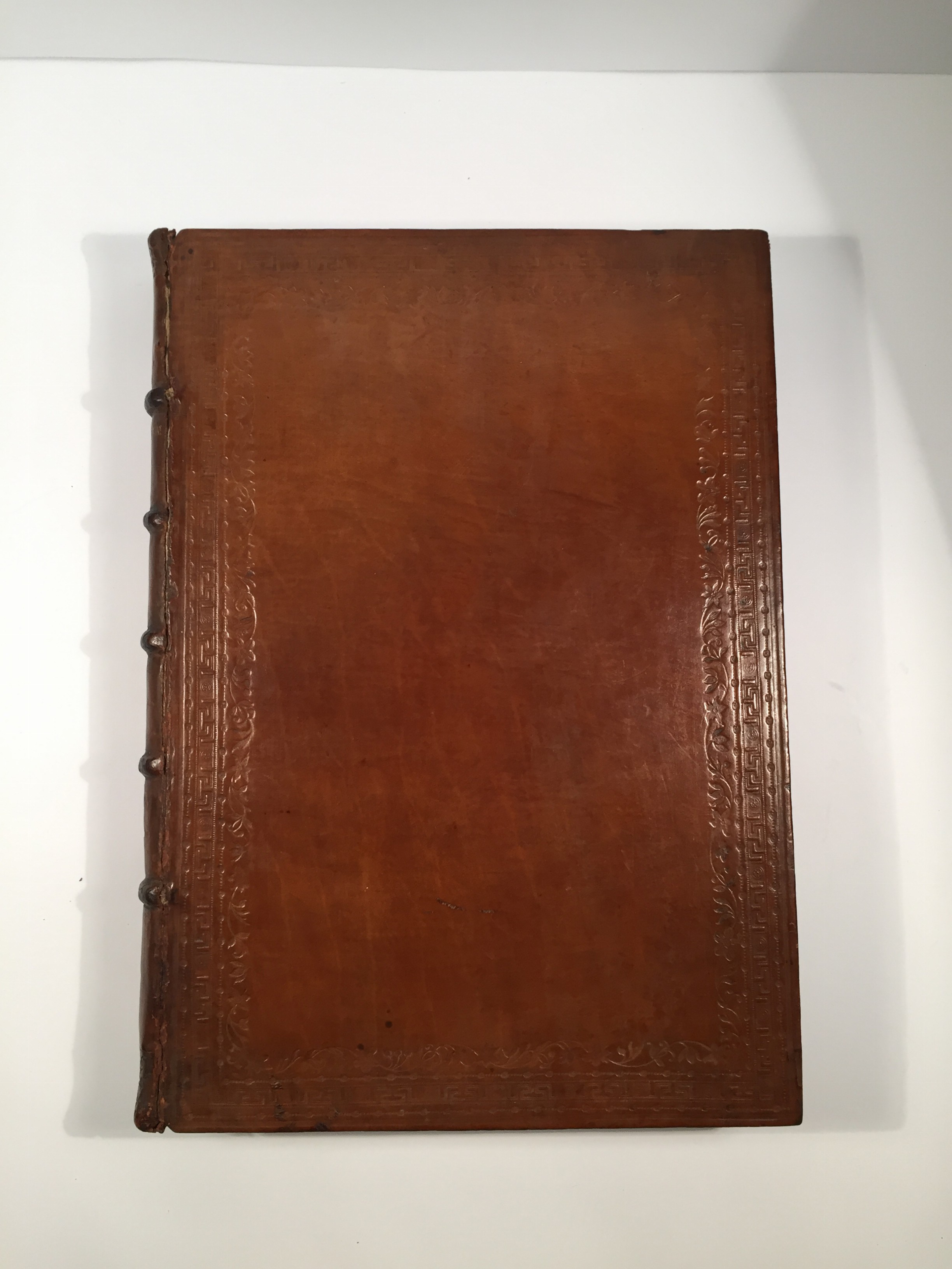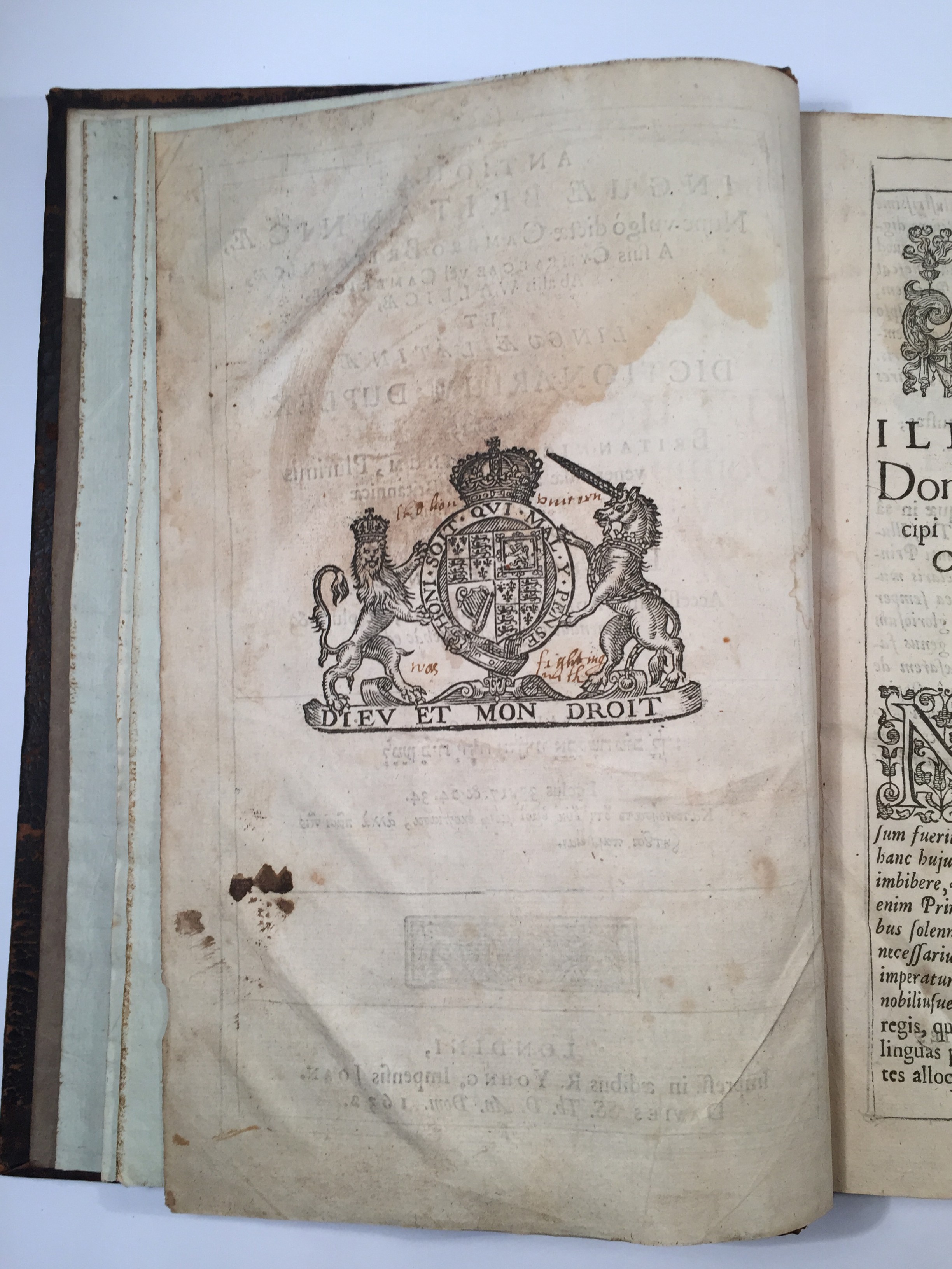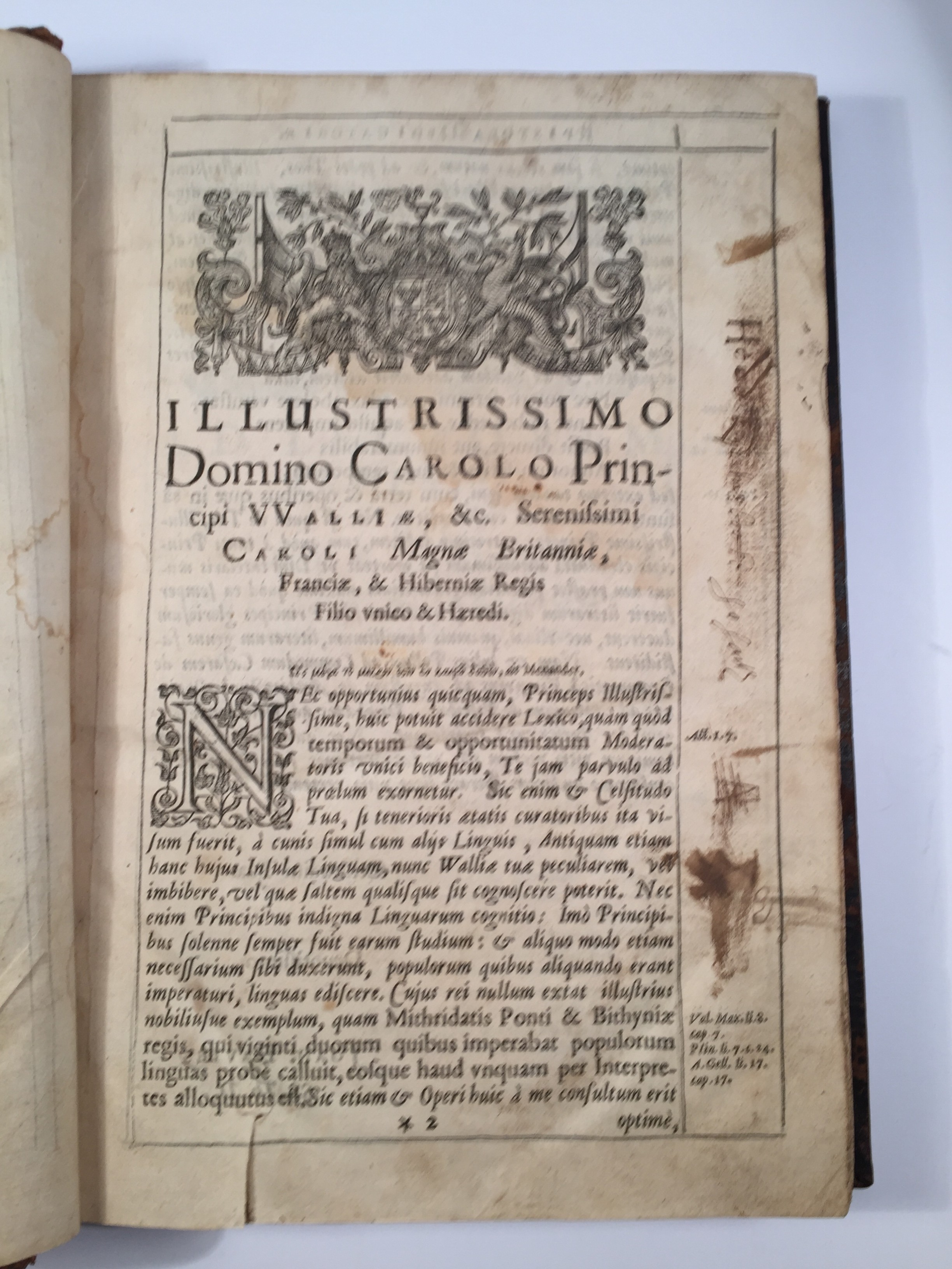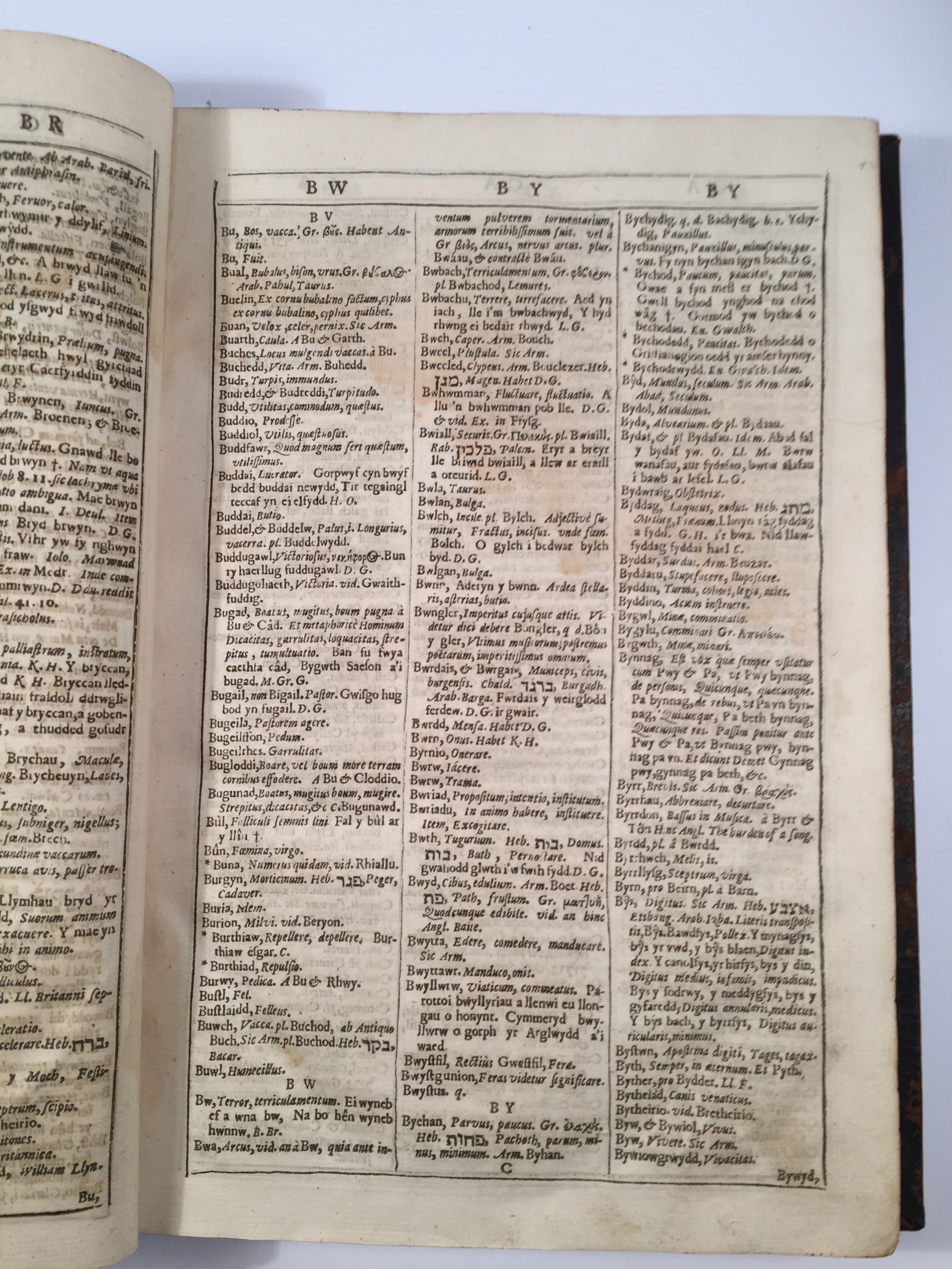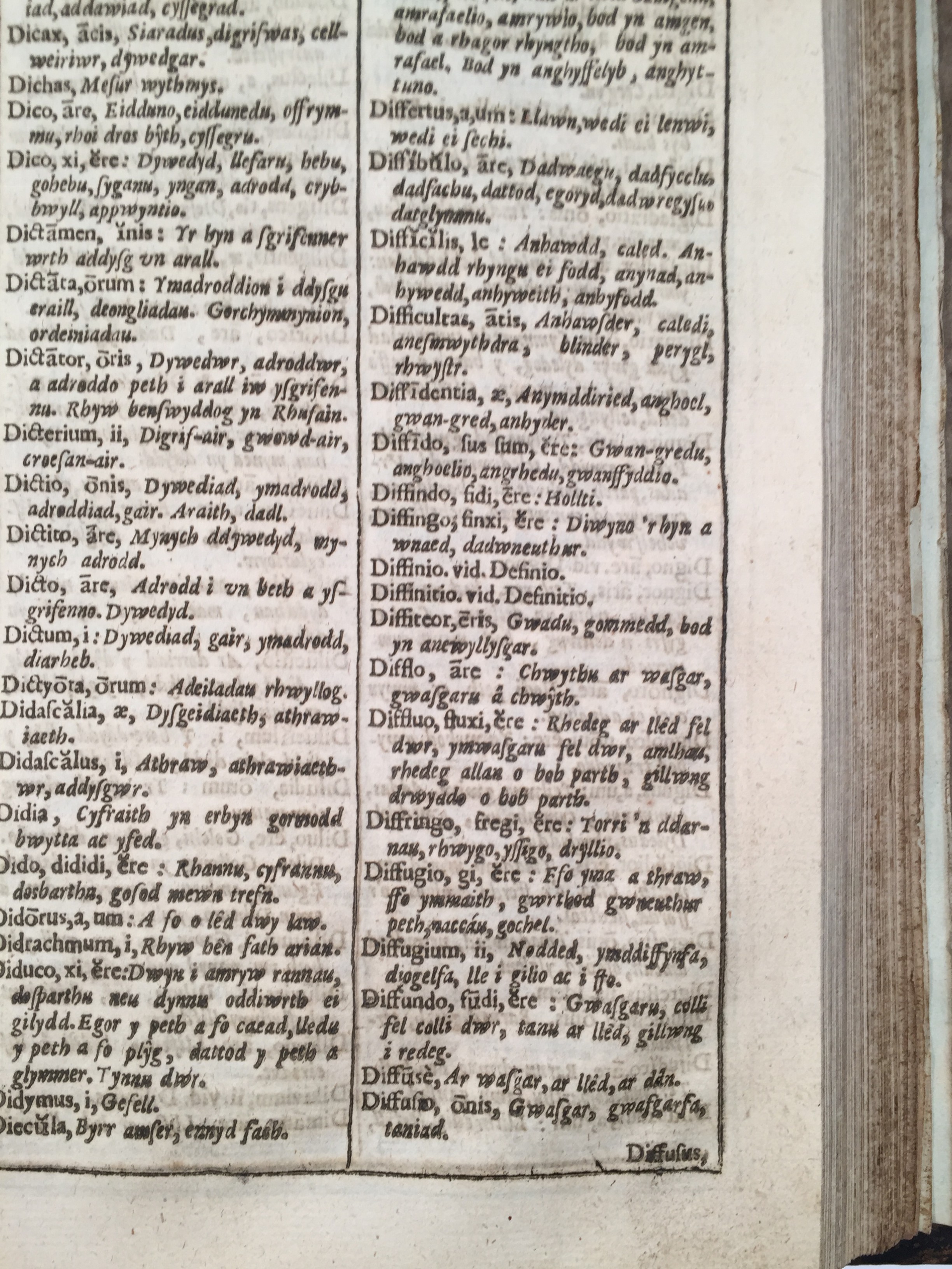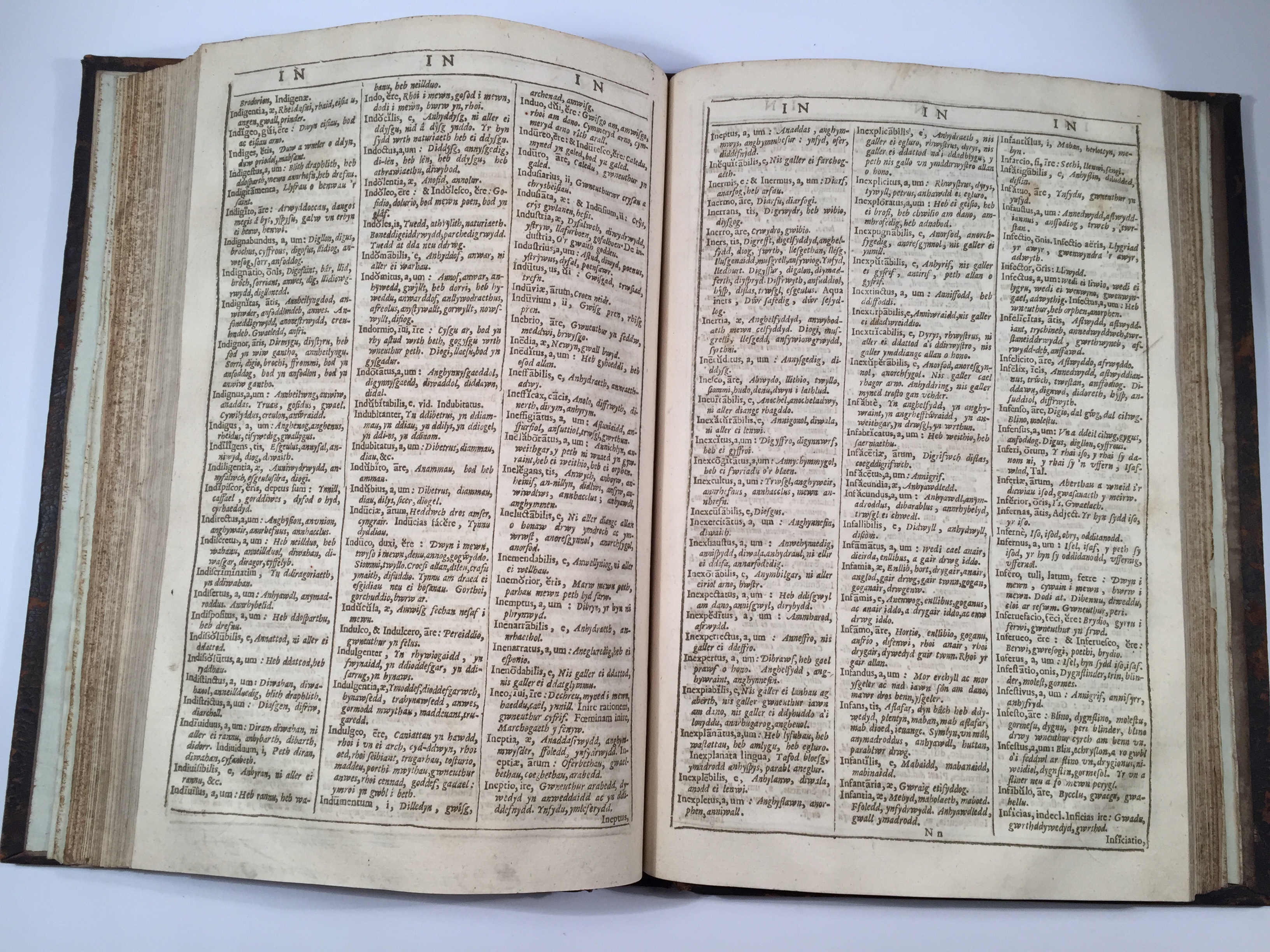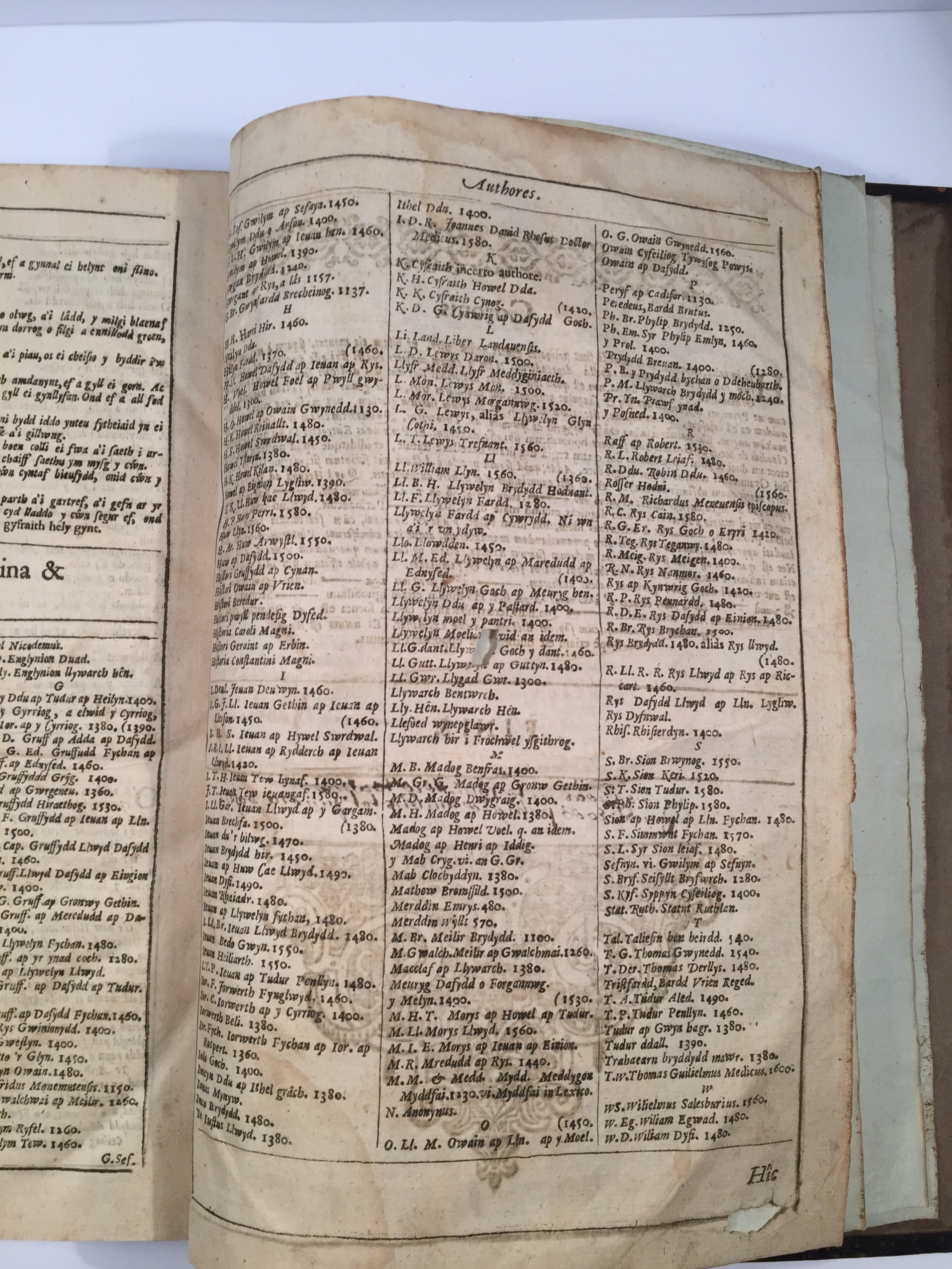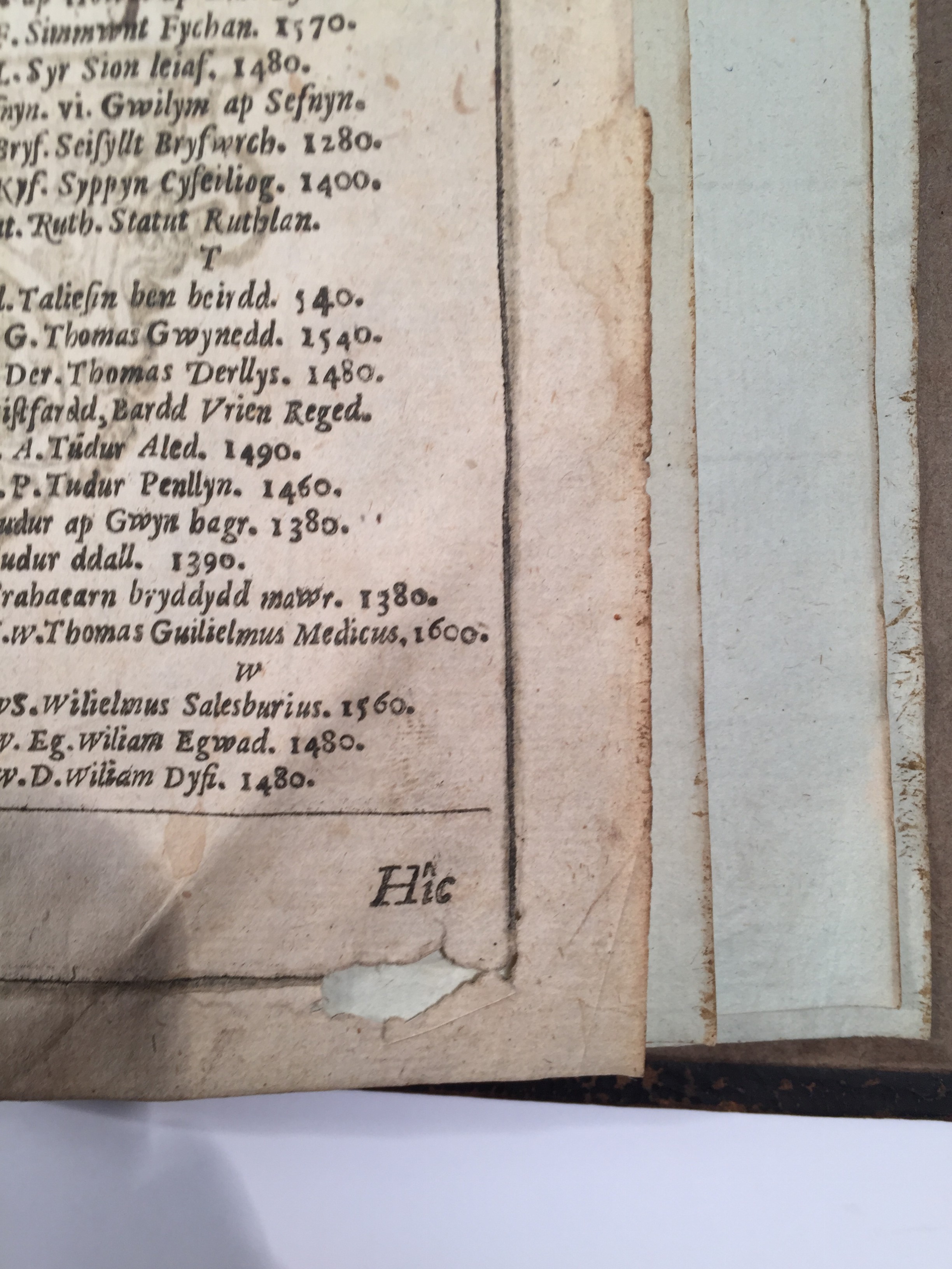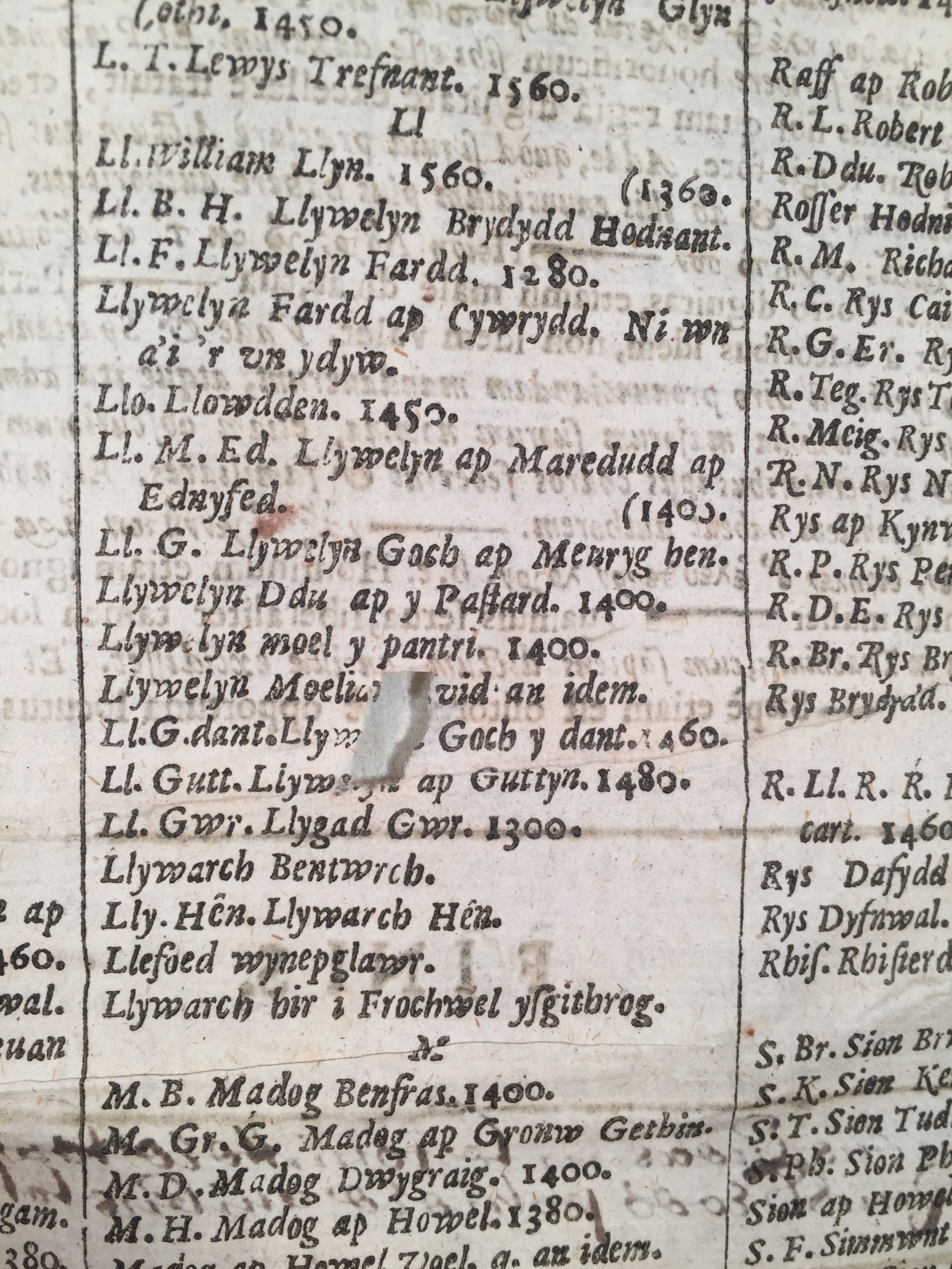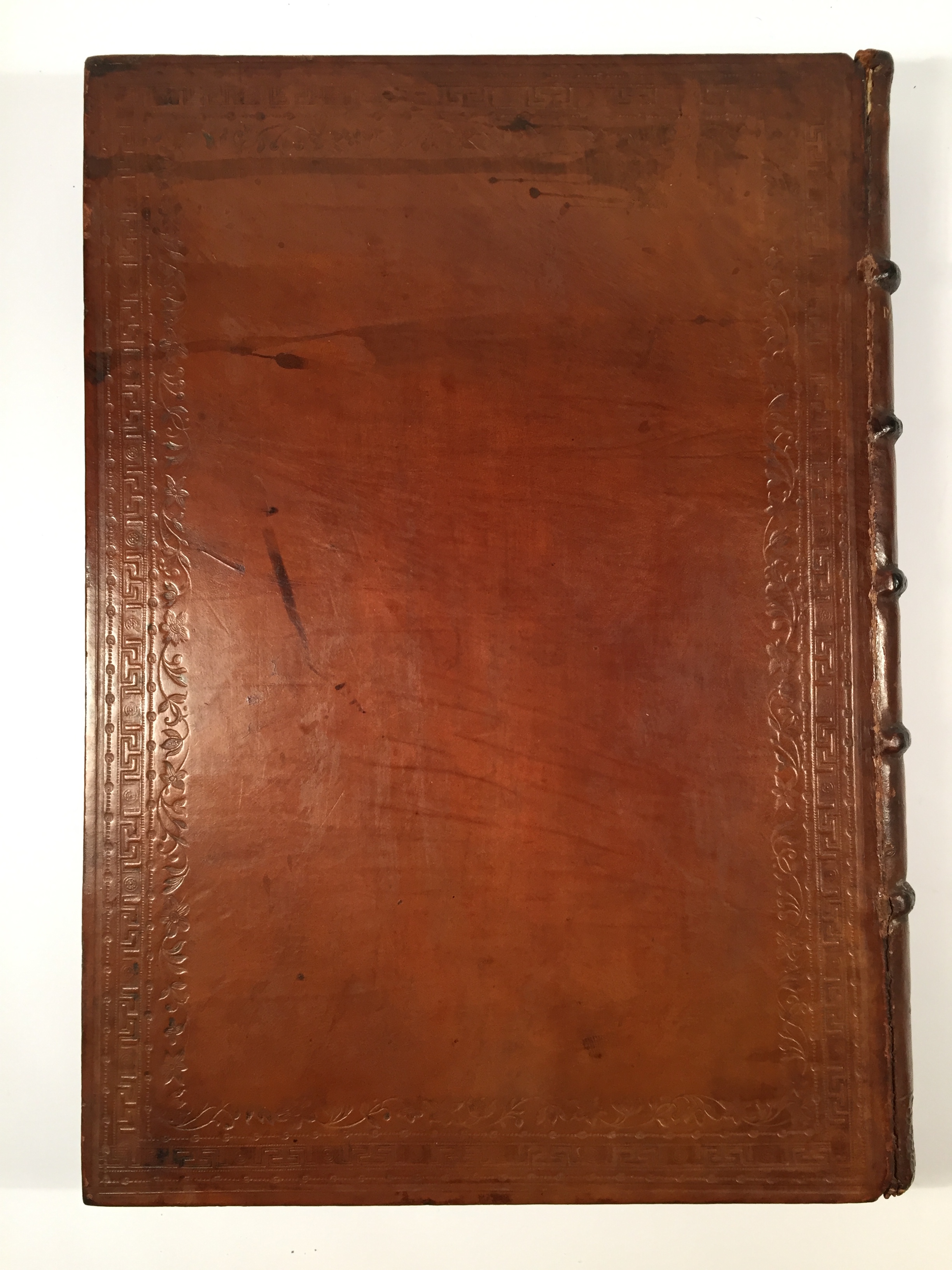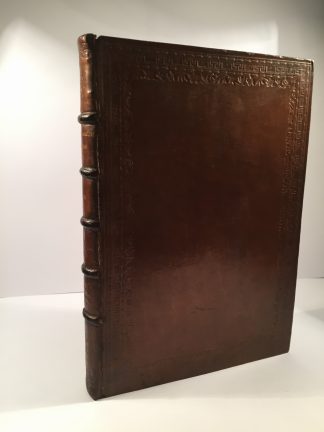DAVIES, John
Antiquæ linguæ Britannicæ, nunc vulgò dictæ Cambro-Britannicæ, a suis Cymraecae vel Cambricae, ab aliis Wallicæ, et linguæ Latinæ, dictionarium duplex..
London, impress. in ædibus R. Young, impensis Joan. Davies SS. Th. D., 1632£3,500.00
FIRST EDITON. Folio. pp. [398]. * , 2* , A-P , 2A-3H , 3I . Issue without the unsigned leaf of commendatory verses. Roman and italic letter, some Hebrew, triple column. Title and text within box rule. Small woodcut device on title, Royal arms on verso, those of the Prince of Wales (Prince Charles) at head of dedication, historiated woodcut initials, elaborate woodcut head and tail-pieces, typographical ornaments, autograph of ‘Hon Howell Vaughan’ repeated in blank margins of several leaves, ‘Ed. LLoyd’ in several margins, engraved case mark of the Porkington Library on pastedown, early latin inscription on verso of last. Light age yellowing, some minor waterstaining in places, the odd mark or spot. A very good, crisp copy in early C19th polished calf, covers bordered with blind Greek key and floral scrolls, spine with raised bands blind fleurons in compartments, title and author gilt.
First edition of Davies’ great Welsh- Latin, Latin-Welsh dictionary; though the second part was the work of Thomas Williams of Trevriw, the whole work was edited by Davies. Davies was of humble origin but had the inestimable advantage of a village education in his native Denbighshire by William Morgan, the translator of the Bible into Welsh. He later in turn assisted Parry in the preparation of his great Welsh Bible (1620). He was held in high esteem as a clergyman and magistrate and the present work gained him a high reputation as a scholar also. The separate glossary of Welsh botanical names remains of particular interest.”The author was ‘esteemed by the academicians well vers’d in the history and antiquities of his own nation, and in the Greek and Hebrew languages, a most exact critic, an indefatigable researcher into ancient scripts, and well acquainted with curious and rare authors’ – Ant. à Wood” Lowndes cit. infr. “The greatest scholar until modern days was John Davies of Mallwyd, editor of the 1620 Bible, whose grammar (in Latin in 1621) and Welsh- Latin, Latin-Welsh dictionary (1632) are among the most influential works of Welsh scholarship.”. J. T Koch Celtic Culture, A Historical Encyclopaedia. “His analysis of the modern literary language is final; he has left to his successors only the correction and amplification of detail.” John Morris Jones.
The Porkington or the Brogyntyn Library at Brogyntyn Hall in Shropshire contained a hugely important collection of Welsh books and manuscripts. It is known that Sir Robert Owen of Brogyntyn (d. 1698) was a bibliophile who continued the family’s traditional patronage of poets, and a collection of printed English literature was developed by his grandfather Lewis Anwyl of Park. Nevertheless, the early history of the library at Brogyntyn is obscure. Some of the family had collected early printed books during the nineteenth century but this does not account for the fine collection of manuscripts that the library held. There is some evidence contained within the manuscripts which suggests that the collection was formed circa 1700 from other manuscripts collections in the surrounding area. The thirty Welsh language manuscripts that the third Lord Harlech deposited in the National Library of Wales in 1934 was, at the time, the largest collection of manuscripts in Welsh that was still privately owned. The fourth Lord Harlech deposited a further fifty-nine manuscripts in the National Library in 1938 and subsequently donated most of the deposits in 1945. They include a medieval psalter and a version of Geoffrey of Monmouth’s Historia Regum Britanniæ, both from the thirteenth century, a fifteenth century miscellany in Middle English, a volume of the Welsh laws of Hywel Dda, and pedigrees, genealogy and heraldry of familes in Wales.
The autograph Howell Vaughan that appears n the margins of the work was probably that of Sir Robert Howell Vaughan (1723 – 1792) the possessor of of the estates of Nannau, Hengwrt, Ystumcolwyn, and Meillionydd in Wales. A most appropriate provenance for this work, a rare first edition.
ESTC S122150. STC 6347. Lowndes II 600. \\\'A most elaborate and excellent work’ Nicholson.In stock


